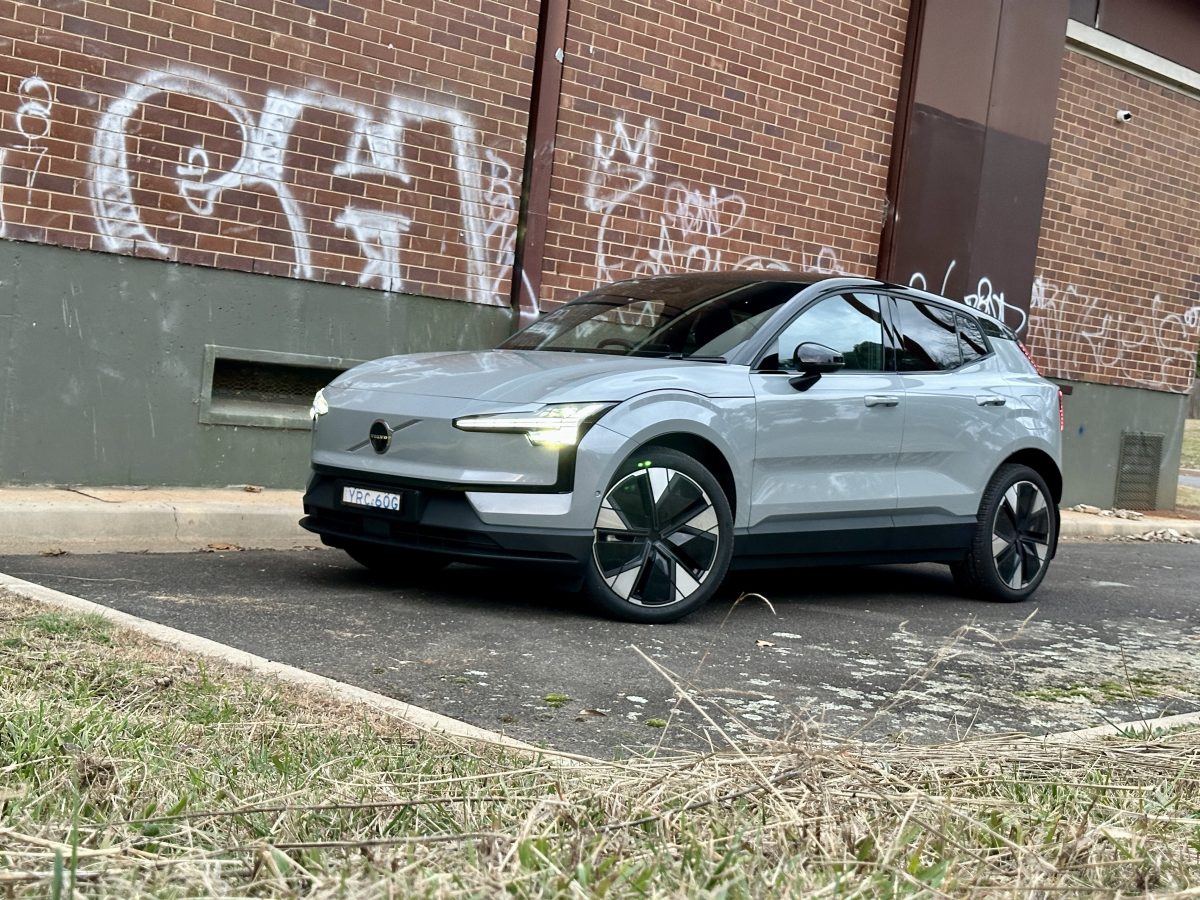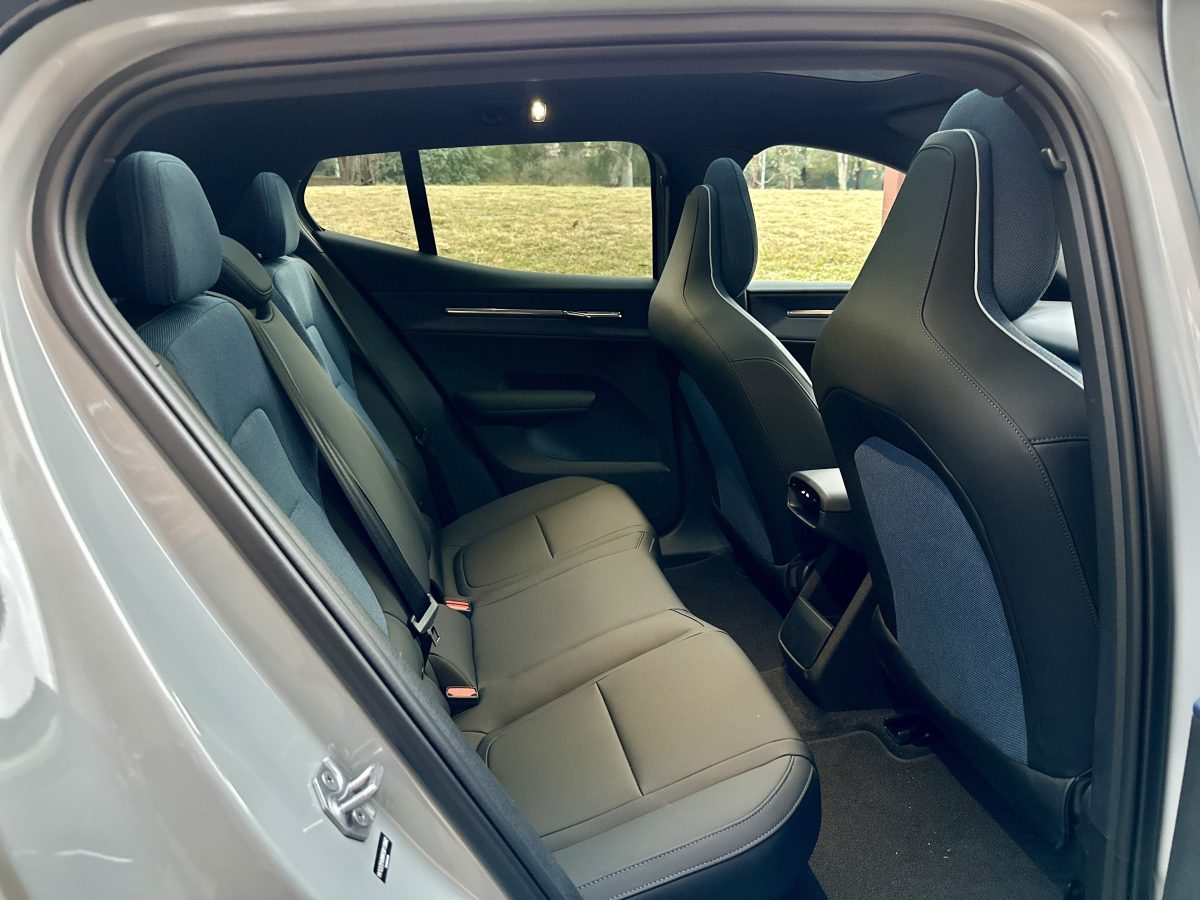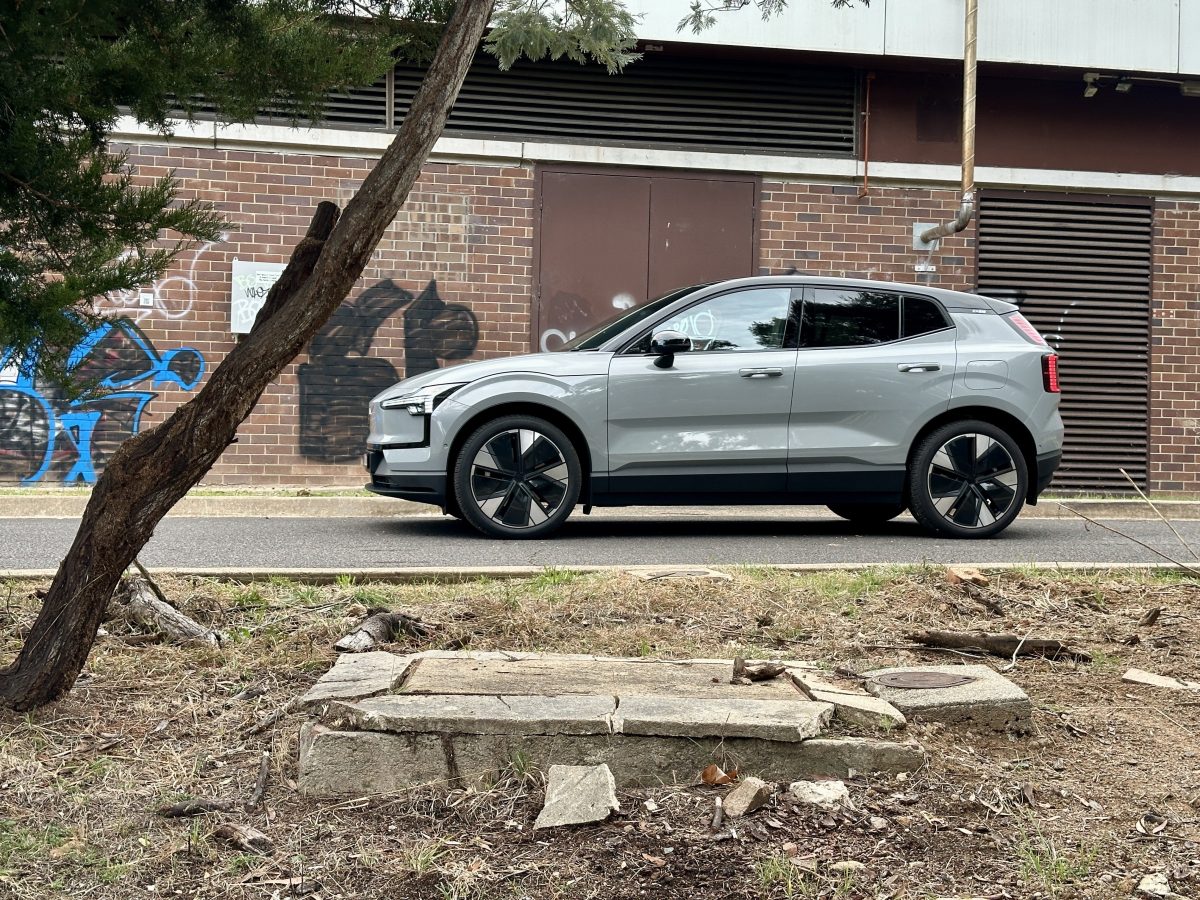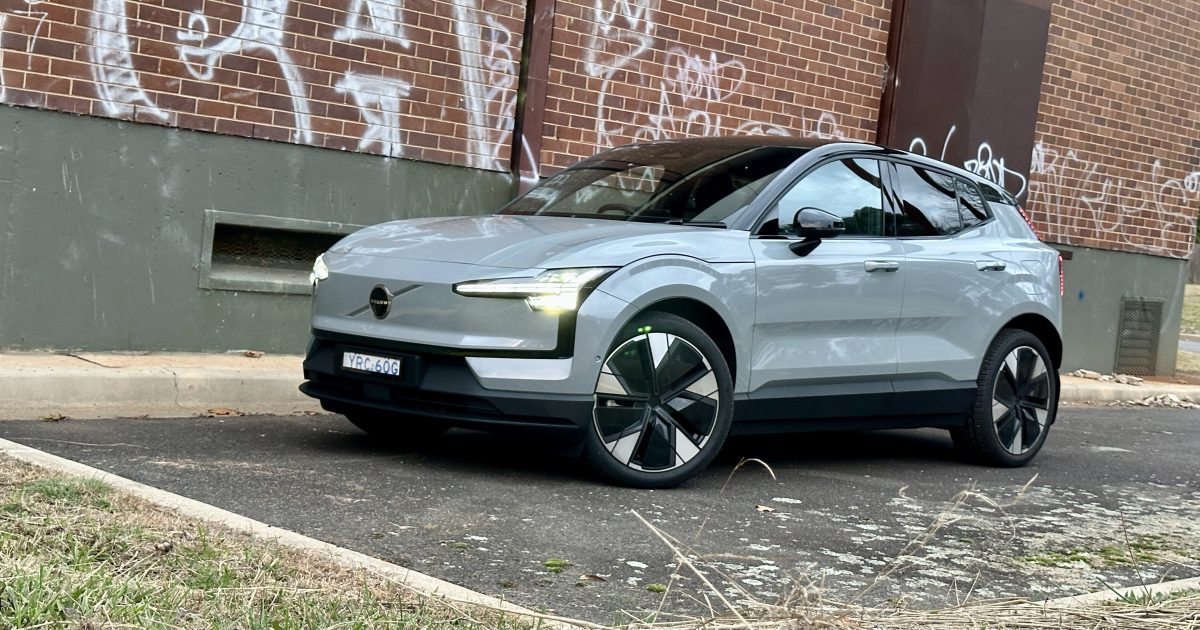
A clean and neat car, unlike the Monash backdrop. Photo: James Coleman.
There’s just something so eminently thoughtful about the Swedish.
Back in 1986, for instance, the Saab 90 introduced a wraparound windscreen for better visibility, chrome bumpers that would pop back into shape after a prang, headlight washers, and doors girded with metal beams for extra safety in a side collision.
The inventions continued over the years to include headlights that would stay on for a set time after you left the car, an ignition barrel in the centre console so you wouldn’t get stuck with a key in a front-on accident, a handy pair of plastic tweezers in the fuse box, and – perhaps best of all – an extra wipe 10 seconds after the windscreen washing sequence to catch any stray drops.
Of course, it’s a little awkward to introduce Volvo at this point, because Geely has a 78 per cent hold on it and most of the cars are built in China.
But because the designers say the ‘Moss Yellow’ colour option of the new EX30 mini-SUV is inspired by “the lichens that grow on the rocks along the Swedish west coast” and the five different ambient lighting options inside are inspired by different Scandinavian landscape, from the northern lights to “Nordic twilight”, we’ll say the Swedish blood still flows thick.
There are other Easter eggs too.
I’ve borrowed the new EX30 Twin Performance ULTRA from Volvo Cars Canberra in Phillip. There are the Single Extended PLUS and ULTRA models below which – as the name suggests – employ a single electric motor over the rear axle and cost from $64,612 in the ACT, but mine has an electric motor on each axle (for all-wheel drive) and costs $74,612.
The boot isn’t massive on account of the battery pack underneath, but the plastic on the inside of the door is etched with a diagram showing all the different dimensions with the rear seats up, the rear seats down, and the rear seats down and front passenger seat rolled all the way forward. This means you can go to IKEA, knowing exactly how many HUVUDROLL meatballs you can cram in.
Storage in the back seats includes a removable tray that features a cool landscape pattern on the outside, showing a moose among trees with clouds overhead. As far as I can tell it serves no practical purpose, but it does make you deeply happy.
The EX30 shares its Geely platform with the recently announced Smart #1 (yes, the Chinese are revisiting the cute, but commercially disastrous Smart ForTwo). So while the result looks chunky and muscular, paired with door handles that feel like you’ve grasped the biggest dumbbell in the gym, it’s actually shorter than a VW Golf.

This ULTRA model comes with the ‘Indigo’ interior colour scheme. Photo: James Coleman.
Inside is cleverly packaged (and entirely recycled). To allow more space in the doors, for instance, the sound system takes the form of a long Harmon Kardon sound bar laid across the dash. The cupholders can pop out from the centre armrest on demand, and there’s one long storage compartment between the seats, complete with two wireless phone charging pads.
But space is still tight, especially in the back. Even my three-year-old, with her father’s penguin legs, complained of a lack of legroom.
By this point, all EVs are beginning to feel a bit same-same from the driver’s seat, but the EX30 does stand out as beautiful. Most are rigged to ride like roller-coasters and rattle your teeth out on every little bump – not so here.
The regenerative braking system isn’t very adjustable – you’re either in one-pedal mode or you’re not – but I didn’t really care because of how well set up it is. The 0-100 km/h time of 3.6 seconds also sounds brutal on paper but, in practice, you’ll only ever be gently walloped into prison for speeding. Even all the normally infuriating active safety features like lane-keeping assistance are restrained and polite.
The EX30 makes the Chinese and South Korean rivals all feel … unfinished.
That said, there are annoying moments.
Like all Volvo products, the infotainment system is built by Google. This is a massive win for the user, because Google knows more about this sort of stuff than anyone at Volvo – or any other car brand for that matter – would.
But because there are absolutely no buttons anywhere – even the hazard lights are on the touchscreen – there are functions that require a needlessly complicated hunt through the digital menus. What was wrong with putting the glovebox button on the glovebox, say?
There is also no display in front of the driver, which means you’re constantly looking to the side for your speed. A heads-up display on the windscreen would fix this, but that’s not here either.
And maybe this won’t be an issue for owners – who will have access to a Volvo app on their smartphone with controls for locking and unlocking (as well as AC and the seat heater setup) – but please, just give me a key fob with buttons. A ‘hands-free’ plastic brick isn’t the same.
Don’t go backwards, Sweden. The rest of the car industry needs you.

The style is also known as ‘computer mouse’. Photo: James Coleman.
2024 Volvo EX30 Twin Performance ULTRA
- $74,612 (ACT driveaway)
- Two electric motors, 69 kWh battery, 315 kW / 543 Nm total
- All-wheel drive (AWD)
- 0-100 km/h in 3.6 seconds
- 445 km estimated range
- 1920 kg
- Yet to be rated for safety
This car was provided for testing by Volvo Cars Canberra. Region has no commercial arrangement with Volvo Cars Canberra.





